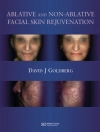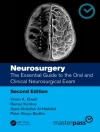There is a wide variation in the clinical syndromes and in the severity of respiratory tract infections. This diversity is only partly accounted for by the large number of infecting agents, because a particular microorganism can itself result in different illnesses. The age, fitness and state of immunity of the patient is of great relevance, and the clinical features of a particular infection vary accordingly. In terms of incidence of infection the acute virus infections are far in the lead. Respiratory infections can be broadly classified into acute and chronic. The acute infections are generally due to bacteria, viruses, rickettsiae and mycoplasma. Chronic infection is either bacterial, mycobacterial, fungal or parasitic in origin. Protection Against Infection There are three methods by which man can protect himself against infections of the respiratory tract-mechanical barriers, phago- cytic cells and the immune response. Mechanical Barriers The cough reflex protects the lung against inhaled irritant sub- stances and larger particles. Smaller particles will be trapped by the layer of mucus which covers the respiratory tract. The ciliated epithelium maintains a constant upward flow of the mucus and via this mucociliary escalator expels particles from the respiratory tract. 2 Infections Infection can occur when these mechanical barriers are altered, and the defect in the mucociliary lining accounts for the increased susceptibility to infection in chronic bronchitis and bronchiectasis.
R. White
Respiratory Infections and Tumours [PDF ebook]
Respiratory Infections and Tumours [PDF ebook]
Achetez cet ebook et obtenez-en 1 de plus GRATUITEMENT !
Langue Anglais ● Format PDF ● ISBN 9789400980877 ● Maison d’édition Springer Netherlands ● Publié 2012 ● Téléchargeable 3 fois ● Devise EUR ● ID 4468182 ● Protection contre la copie Adobe DRM
Nécessite un lecteur de livre électronique compatible DRM












